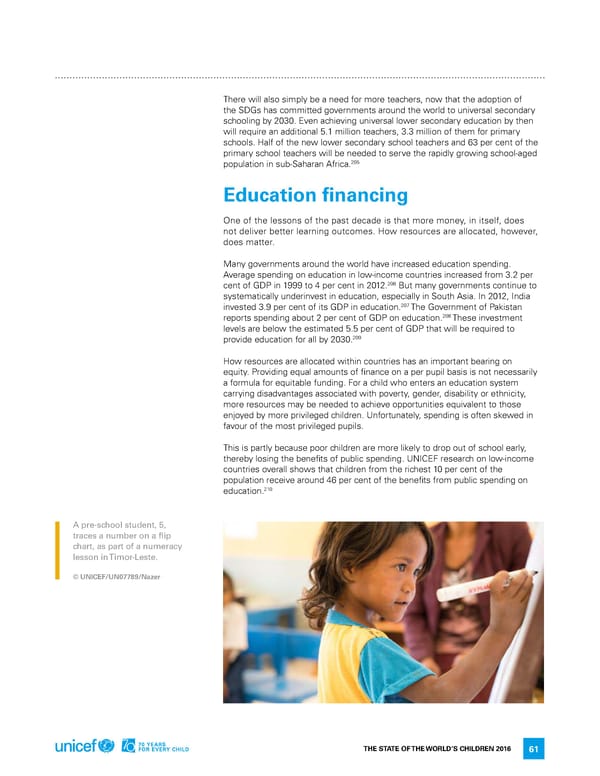There will also simply be a need for more teachers, now that the adoption of the SdGs has committed governments around the world to universal secondary schooling by 2030. even achieving universal lower secondary education by then will require an additional 5.1 million teachers, 3.3 million of them for primary schools. half of the new lower secondary school teachers and 63 per cent of the primary school teachers will be needed to serve the rapidly growing school-aged 205 population in sub-Saharan africa. Education financing one of the lessons of the past decade is that more money, in itself, does not deliver better learning outcomes. how resources are allocated, however, does matter. Many governments around the world have increased education spending. average spending on education in low-income countries increased from 3.2 per 206 cent of GdP in 1999 to 4 per cent in 2012. But many governments continue to systematically underinvest in education, especially in South asia. in 2012, india 207 invested 3.9 per cent of its GdP in education. The Government of Pakistan 208 reports spending about 2 per cent of GdP on education. These investment levels are below the estimated 5.5 per cent of GdP that will be required to 209 provide education for all by 2030. how resources are allocated within countries has an important bearing on equity. Providing equal amounts of finance on a per pupil basis is not necessarily a formula for equitable funding. for a child who enters an education system carrying disadvantages associated with poverty, gender, disability or ethnicity, more resources may be needed to achieve opportunities equivalent to those enjoyed by more privileged children. Unfortunately, spending is often skewed in favour of the most privileged pupils. This is partly because poor children are more likely to drop out of school early, thereby losing the benefits of public spending. UniCef research on low-income countries overall shows that children from the richest 10 per cent of the population receive around 46 per cent of the benefits from public spending on 210 education. A pre-school student, 5, traces a number on a flip chart, as part of a numeracy lesson in Timor-Leste. © UNICEF/UN07789/Nazer The STaTe of The World’S Children 2016 61
 70 Years for Every Child Page 76 Page 78
70 Years for Every Child Page 76 Page 78